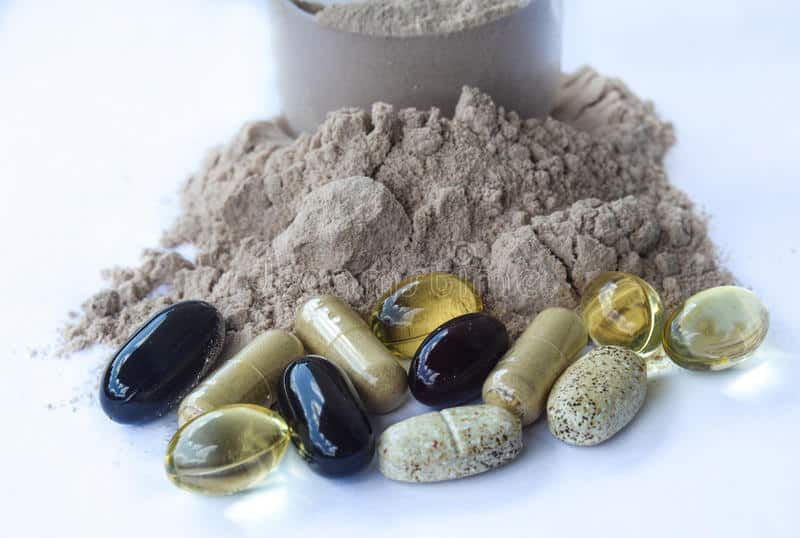Creatine is not only one of the most popular supplements on the market, second to protein supplements, it is one of the most well researched. This is probably what has led to its every increasing popularity. While many performance enhancing aids exist, you’ll be hard pressed to find once with as much back up as creatine. The proof extends further than just exercise as well. While it has been shown to increase performance, it supposedly also provides a beneficial effect on post exercise recovery and even brain/spinal cord health. Newer research as seen its possible effects on depression, pregnancy, diabetes and heart ischemia. But what is creatine? And how does it provide these supposed benefits? The scope of this blog is to delve in to what it actually is, and the mechanisms which through it provides benefit.
What is creatine?
Creatine synthesis (creation) requires three amino acids (the building blocks of protein). These are: glycine, arginine and methionine. Methionine is not essential to the process, but it helps massively when it is available. TECHNICALLY, creatine can be made from things already available in the body (glycine and arginine can be made in the body without dietary aid) BUT doing so is very demanding, meaning it is usually a good idea to include dietary sources of creatine in the diet. Naturally occurring creatine is typically found in red meat and different types of fish and sea food. Half a kilo of beef or salmon can contain 1-2 g of protein. This is why, vegetarians and people who do not include adequate protein in their diet typically have low levels of creatine. The majority of creatine is stored in the muscle (about 95% of it) with low amounts being found in the brain.
What role does it play in our body?
Creatine has many functions in the body. Below I’m only listing the roles where the mechanism is understood. Any other functions will also be listed in the benefits of creatine supplementation.
Creatine’s primary role, and most well-known, is as a metabolic aid. Once creatine enters the system, a reaction occurs by which it becomes creatine phosphate or phosphocreatine. The easiest way to understand this is to first understand what ATP is. ATP is the bodies currency used to create energy. All muscular contractions require ATP. The more ATP we have, the more muscular contractions that can happen, the more force or power (force multiplied by velocity) we produce. ATP produces this energy by splitting, and losing a phosphate, leaving ADP. During very high intensity exercise such as a 1 rep maximum deadlift or an all-out sprint, ATP is required in abundance and at rapid rates. This is also true for the onset of movement, where the oxidative systems haven’t picked up yet. This is achieved first by stored ATP in the muscle, then by the phosphocreatine energy system. As previously mentioned, once ATP is split it leaves behind ADP. The splitting of phosphocreatine back to creatine replenishes a phosphate to ADP for it to become ATP again. Whilst this produces a lot of ATP and therefore energy, fast, phosphocreatine is stored in small amounts meaning the system fatigues relatively quickly. After 10 seconds, 70% of muscle phosphocreatine will have been used and it’ll be close to depletion around 20 seconds. 2-3 minutes is then needed for it to recover, and 5 minutes for a near full recovery.
You may be thinking, why can’t the muscle just have more ATP stored, instead of creatine? Surely that would solve the problem? Unfortunately, not. Too much resting ATP in the muscle would affect other energy systems. Not to mention it would go to waste as ATP is relatively unstable as a molecule and it would quickly become ADP again. Too much ADP in the muscle also has detrimental effects. In that sense, creatine actually also works as a bank and as a metabolic mediator, to store phosphates until ATP is suddenly needed.
Creatine also acts as an energy shuttle. Taking ATP from where it is created by sites using oxygen, to sites where it is utilized (where the muscle contracts).
The benefits of creatine supplementation to body composition and performance
But why supplement creatine? We’ve already established above that: 1. We can get creatine from food sources and 2. Your body can actually make its own creatine. Well, with the average diet, creatine stores are only 60-80% full. Creatine supplementation is shown to fill up an extra 20-40% of that. But how do we know that ingesting creatine will lead to more creatine phosphate? They technically aren’t the same thing. If certain things become unbalanced in the body, the body must react to make things perfectly balanced, as all things should be (Thanos, 2019). So, if we have an abundance of creatine and not much creatine phosphate in comparison, your body will balance it out. We force the reaction, giving us more resting creatine phosphate. Second, if more creatine is available in the body, the body can potentially create more creatine phosphate faster.
More creatine phosphate in the muscle can lead to greater performance in speed, power and maximum force tasks. As previously mentioned, anything that lasts less than 20 seconds is going to rely heavily on creatine phosphate. The more available, the more ATP that can be rapidly created and used meaning more overall force production and potentially for slightly longer than normal (it is however unlikely to exceed 20 seconds). If more force is produced, less perceived effort will be exerted at lower intensities. Also, more creatine may lead to a faster recreating of creatine phosphate. For someone who needs repetitive sprint training, such as a football or American football player, this may allow for more sprints. But how does this benefit the gym goer? Well, if we can produce more force and/or for more a longer duration we can apply more external load and/or repetitions to the targeted muscle. If we can recovery faster between sets, due to the decrease in the time it takes to recreate creatine phosphate, we may be able to achieve more sets. Over time this means we increase our overall volume load (Sets x reps x load) which is strongly associated with increased muscular strength and mass (bigger muscles).
What does this mean to someone who wants to lose body fat? When dropping body fat, it is vital we maintain as much muscle mass as possible. Unfortunately, in calorie restricted conditions, we may be short of the carbohydrates your body needs to get glucose which we need to fuel high intensity exercise. Your body may try to form glucose from protein, which is easiest taken from our precious muscle mass. If we can provide more external load to the muscle, which is possible through creatine, we provide a stimulus which tells the body it needs to continue to produce high amounts of force. In turn, your body is more likely to spare muscle mass, as it is deemed necessary. Secondly, if we can complete more bouts of exercise (sprints or sets) due to increase recovery we can burn more calories.
The not so superficial benefits
That lists some of the more obvious benefits of creatine, which help us in our goals of increased performance, fat loss and hypertrophy. However, creatine is a great asset to systems which aren’t so superficial.
Because of its association with increased muscle mass and strength, creatine can provide a huge benefit to people who are currently going through rehabilitation of joints and muscles. Increased growth and strength within a muscle will aid the joint or muscle in getting back to full functionality. Creatine has also been shown to limit muscle atrophy (think the reverse of muscle growth) in populations who are immobilized due to an injury. So, throughout the injury and rehabilitation process, creatine may provide assistance at multiple stages.
Through the maintenance of nerve cell function, creatine may play an important role in traumatic brain injury, spinal cord injury and lack of blood flow to the brain. In traumatic brain injury, creatine has been shown to limit the damage to the main part of the brain (cerebrum) by 36-50%. In spinal cord injury, creatine supplementation has been shown to reduce the amount of scar tissue and improve locomotor function. When blood flow is not fully available to the brain, creatine has been shown to improve brain bioenergetics which potentially limits the effects of a lack of blood flow.
During events where blood flow is limited to the heart, creatine and phosphocreatine play a vital role in maintaining the function of the heart. It may limit the irregular heart beating seen in circumstances (such as arterial blockage) where we have a restricted amount of blood reaching the heart. For this reason, it may also be beneficial as a bolt on to current treatments for people who are at high risk of heart ischemia and/or stroke.
The Dosing
First of all, there is no scientific evidence to prove you’ll ever need anything other creatine monohydrate. This has been shown time and time again to be adequate in inducing the performance enhancing effects of creatine. Other supplements may work exactly the same but are usually more expensive and are just a way of supplement companies milking more money out of you. Creatine in a powdered form is always the best way to go, as you can control the dosage and also add it to anything you want.
The first thing you may hear about when looking into creatine supplementation is creatine loading. Creatine loading has been shown to have benefit, despite information claiming the contrary. The aim of loading is to saturate the muscles fast with a lot of creatine. Once the loading phase is completed a reduced dose can be taken to maintain. Currently guidelines suggest 1 teaspoon (5g) of creatine monohydrate, 4 times a day for 7 days. After that, creatine levels can be maintained with just 1 teaspoon a day. Creatine should be ingested with carbohydrates where possible, as this will improve retention.
Conclusion
When it comes to research, creatine as a supplement is nearly unrivalled in the shear amount that exists. It has been proved to increase performance time and time again and the mechanisms which cause the increase can be easily explained. It provides not only benefit to muscle growth and fat loss, but also other less obvious advantages such as its potential impact on central nervous system health. After 7 days of loading, taking a teaspoon 4 times a day, you can maintain heightened creatine levels with just 1 teaspoon a day. Creatine monohydrate is the way to go with creatine supplements due to its vast body of research and cost relative to other creatine supplements.

